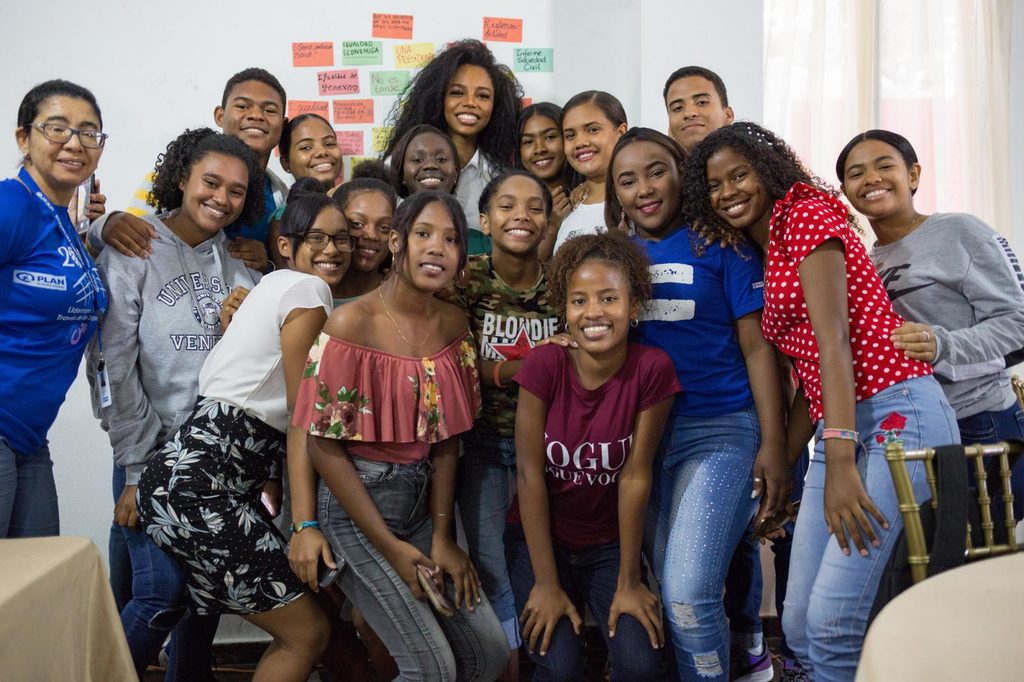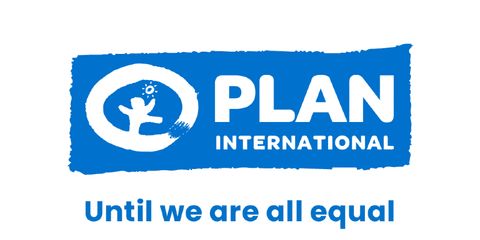29 MAY 2020
In the current state of global chaos around the COVID-19 crisis, the impact on girls and women’s sexual and reproductive health and rights is not making any headlines. But the reality is that the crisis will have a truly devastating impact on the futures of millions of girls and young women. It’s time for action, say Sabina Pokhrel, SheDecides 25×25 Generation of Change Young Leader and AB Albrectsen, CEO of Plan International.

Girls and young women faced significant barriers in accessing essential sexual and reproductive health information and services before the COVID-19 crisis. Now, amid a pandemic that is straining even the most robust of healthcare systems, there is a real risk that these rights will move even further from reach.
With lockdown leading to a shadow pandemic of gender-based violence and rates of child marriage, teenage pregnancy and FGM predicted to increase exponentially, information. Services that protect and promote girls’ and young women’s sexual and reproductive health and rights are more vital than ever.
The knock-on effects of COVID-19 on girls and women
Complications from pregnancy and childbirth is the leading cause of death for girls aged 15-19, and is known to increase substantially in crisis settings. Plan International’s Living Under Lockdown report found that when schools were closed during the Ebola crisis, there was a steep increase in unintended teenage pregnancies and a staggering 75% increase in maternal mortality over just 18 months.
According to the latest projections, some 47 million women may be unable to use modern contraceptives if the lockdown carries on for six months. This means up to 7 million unintended pregnancies, with thousands of young lives at risk. Also predicted is an increase in female genital mutilation cases by 2 million.
Reports from the ground are already bearing these predictions out. A new study by Plan International, UNFPA and the Institute for Family Health into the situation among Jordan’s refugee populations observed a 10-20% increase in women who have been unable to access family planning services as well as a rise in gender-based violence.
The threat of COVID-19 to existing sexual and reproductive health services
Yet, far from a global effort to step up lifesaving services in light of these shocking statistics, the crisis threatens to shrink girls’ and young women’s already limited access to sexual and reproductive health information and services in three major ways. Far from a global effort to step up lifesaving sexual and reproductive health services, the crisis threatens to shrink them further
First, we are seeing resources redirected away from vital sexual and reproductive health and rights services in favour of other COVID-related responses. We know from past epidemics that a lack of access to essential health services due to a shutdown of services can ultimately cause more deaths than the epidemic itself. Difficulty accessing contraceptives and other essential services such as safe abortion denies millions of girls and women the right to control their bodies and lives.
Second, lockdown measures in response to COVID-19 have closed schools around the world, leaving an estimated 1.54 billion young people out of school, even fewer young people are now receiving vital Comprehensive Sexuality Education. All too often when shifting from offline to online learning, CSE falls by the wayside and isn’t included in learning packages. Even where it is, with connectivity still being a luxury rather than a right and an ever-widening digital gender gap, girls and young women from marginalised, poorer households are the least likely to be able to access this information. Even if they then overcome numerous barriers to get online, girls and young women are so often subject to harassment and abuse, they are less likely to stay online.
Third, as COVID-19 fuels and shapes major political and economic change, there is a concern that more conservative governments will seek to use the crisis to curtail hard-won sexual and reproductive health and rights, for example, by limiting access to safe abortion. There have already been attempts by at least 11 US states (predominantly in the mid-West and South) to delay abortions. In contrast, there have been moves by other countries such as the UK and Ireland to relax requirements and permit telemedicine for abortion for the duration of the crisis, policies that are to be applauded.
Bridging the gap
The scale of the problem demands concrete actions from our governments. With disruption to schools, health services and community centres, new ways of providing information and support to adolescents and young people need to be established. This can include social media and remote learning, but comprehensive sexuality education must also be included in distance learning packages and considerations made for those who do not have access to digital resources.
Policy makers must also make sure that girls are not discouraged from returning to school by being flexible in their approach to education and making it easy for pregnant girls and young mothers, who often face stigma and discriminatory school re-entry laws, to complete their education.
In our programmes at Plan International, we are using a range of innovative methods to ensure we reach children and young people with vital information including radio, TV, mobile apps, video animations, songs and phone hotlines.
Our COVID-19 SRHR response
- In Laos: we are working with the Ministry of Education and Sports and UNFPA to develop online modules on comprehensive sexuality education that teachers can use for distant learning. We are also developing e-learning materials for adolescents that will combine SRHR and COVID-19 prevention messages.
- In Malawi: with Timveni (a youth radio and TV media programme with national coverage) we have promoted key SRHR messages and supported a phone-in session with girls, where concerns were raised around increased rates of teenage pregnancy and child marriage. We have also worked with partners to establish a district WhatsApp-based Covid and SRHR forum and helped distribute 300 COVID-19 leaflets in braille to support beneficiaries with visual impairment.
- In Rwanda: we are working on a song audio and video production in collaboration with a group of young artists which will be used to advocate for the continuity of sexual and reproductive health services and interventions. We are also producing a video animation on COVID-19 to be shown on National television which addresses issues such as teen pregnancy.
Governments must ensure continued access to sexual and reproductive health services, which means keeping clinics open and using tele-health as an alternative to face-to-face appointments. Governments and the private sector should also work together to ensure continuity in the supply chain of contraceptives and essential medicines for those living with HIV.
These services are of paramount important in humanitarian contexts, where sexual and reproductive health services must be treated as the lifesaving interventions they are.
- In Jordan: we collaborated with UNFPA to conduct a rapid assessment on the impact of COVID-19 on the ability of adolescent girls and young women to access gender-based violence and sexual and reproductive health and rights services. Data was collected in 5 different locations including two Syrian refugee camps.
- In Zambia: We are promoting parental support to ensure access to essential sexual and reproductive health and rights services (collaborating with the Ministry of Health, Ministry of Education and Ministry of Trade & Industry). Our messages have been disseminated through national TV channel, with a potential audience of 5.2 million people, the majority being adolescents and young people.
- In Zimbabwe: We are supporting the Ministry of Health to deliver essential sexual and reproductive health services (outreach and mobile clinics) to the most vulnerable populations during the pandemic to ensure the supply chain for is not disrupted. We are also facilitating the referral of young people to these services. We also participated in a discussion on ‘The COVID-19 Lockdown and Gender Based Violence’ which broadcast on Radio Zimbabwe, with an estimated listenership of 2.5 million people. The same topic was also discussed on 4 community radio stations across the country, collectively reaching over 8 million listeners.
Categories: Emergencies, Protection from violence, Sexual and reproductive health and rights
